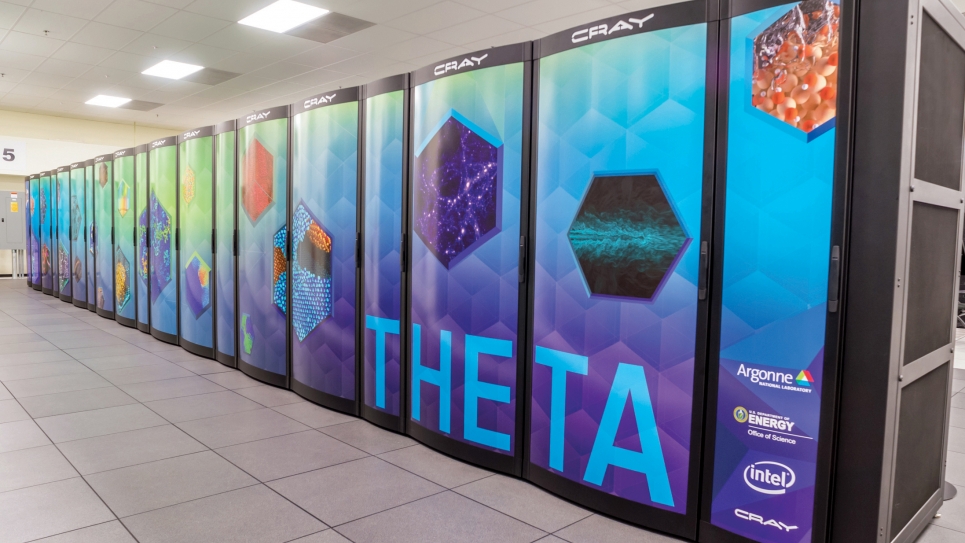Argonne hosts DOE supercomputers for use by research scientists in need of large computational resources. Supercomputers are composed of many computing nodes (1 node = 1 physical computer) that are connected by a high-speed communications network so that groups of nodes can share information quickly, effectively operating together as a larger computer.
If you look inside your Desktop or Laptop you'll find these parts:
A computing node of a supercomputer is very similar, each has simliar parts, but it is designed as a single unit that can be inserted and removed from large closet-sized racks with many others:
In large supercomputers multiple computer processors (CPUs) and/or graphics processors (GPUs) are combined into a single node. It has a CPU on which the local operating system runs. It has local memory for running software. It may have GPUs for doing intensive calculations. Each node has a high-speed network connection that allows it to communicate with other nodes and to a large shared filesystem.
Large computer systems typically have worker nodes and login nodes. login nodes are the nodes on which every user arrives when they login to the system. login nodes should not be used for computation, but for compiling code, writing/editing code, and launching jobs on the system. A job is the application that will be launched on the worker nodes of the supercomputer.
These supercomputers occupy a lot of space in the ACLF data center. Here is our staff at the time (2019) in front of Mira, an IBM supercomputer, that debuted as the third fastest supercomputer in the world in 2012.
The decals are stickers attached to the front of the computer racks (closet sized). If you look inside a single closet you will see rows of computer nodes. Notice that there are repetitive rows inside the racks. These machines are made for nodes to be replaced if needed.
Theta is an 11.7-petaflops supercomputer based on Intel processors and interconnect technology, an advanced memory architecture, and a Lustre-based parallel file system, all integrated by Cray’s HPC software stack.
Theta Machine Specs
- Speed: 11.7 petaflops
- Each Node has:
- one 64-core Intel Xeon Phi (7230) CPU running at 1.3-GHz
- 192GB of DDR4 memory
- 16GB of high-bandwidth memory
- 4,392 Total nodes installed in 24 Racks
- High-speed Network Tech: Aries network with Dragonfly topology
Inside ThetaGPU, you'll also see repetition, though NVidia placed these fancy plates over the hardware so you only see their logo. However, each plate covers 1 computer node.
| ThetaGPU Racks | ThetaGPU Inside |
|---|---|
 |
 |
ThetaGPU is an NVIDIA DGX A100-based system. The DGX A100 comprises eight NVIDIA A100 GPUs that provide a total of 320 gigabytes of memory for training AI datasets, as well as high-speed NVIDIA Mellanox ConnectX-6 network interfaces.
ThetaGPU Machine Specs
- Speed: 3.9 petaflops
- Each Node has:
- 8 NVIDIA (A100) GPUs each with 40GB onboard memory
- 2 AMD EPYC (7742) CPUs
- 1 TB DDR4 Memory
- 24 Total Nodes installed in 7 Racks
The inside of Polaris again shows the nodes stacked up in a closet.
Polaris is an NVIDIA A100-based system.
Polaris Machine Specs
- Speed: 44 petaflops
- Each Node has:
- 4 NVIDIA (A100) GPUs
- 1 AMD EPYC (Milan) CPUs
- ~560 Total Nodes







